Clea DuVall on Working With Tegan and Sara to Create ‘High School,’ Getting Nirvana’s Music and Never Watching ‘My So-Called Life’: ‘I’m a Bad ‘90s Kid!’
- Oops!Something went wrong.Please try again later.
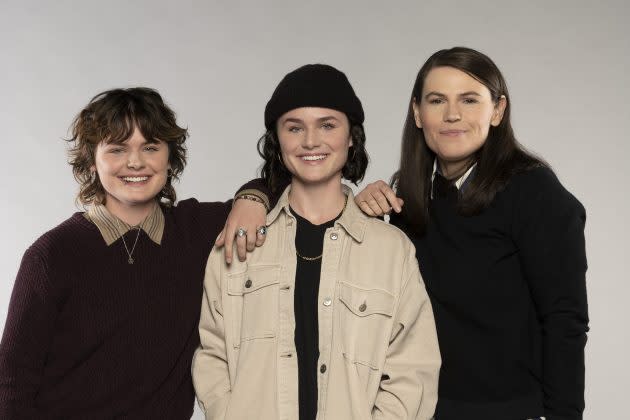
SPOILER ALERT: This interview contains light spoilers for the first four episodes of “High School,” now streaming on Amazon Freevee.
When Clea DuVall first met the Canadian indie musicians Tegan and Sara Quin years ago, “I was not familiar with their music,” she recalled in an interview this week. Nonetheless, after DuVall — a prolific actor in movies such as “But I’m a Cheerleader” and “Argo” — was introduced to the duo when she joined some friends who were seeing them perform, the three women eventually all became good friends “through being in the same circles.” As DuVall began to explore directing, the first things she ever did were promotional videos for Tegan and Sara’s “Heartthrob” record, released in early 2013. Since then, she’s collaborated with them a number of times: Among other things. Sara Quin scored DuVall’s 2016 feature debut as a writer-director “The Intervention,” and Tegan and Sara wrote the Christmas song “Make You Mine This Season” for her second film, 2020’s lesbian romcom “Happiest Season.”
More from Variety
BravoCon News Roundup: Teresa Giudice Promises 'A Lot' of the House Husbands on 'RHONJ' Season 13
Kathy Hilton Slams Lisa Rinna's Aspen Claims: 'I Don't Even Talk Like That'
So when DuVall read an early version of “High School,” the Quins’ 2019 memoir recounting their teenage years in Calgary, it only made sense that she envisioned adapting it herself. “The way they captured what it was like to be a queer teenager coming out and coming of age in the ’90s, it mirrored my experience so much,” she said. “Even though I was a woman in my 40s reading the book, feeling seen at that time — who I was at that time, it was just so powerful.”
The chapters of the book are divided between the sisters, and for a television show about identical twins, that format would eventually serve as the template to keep track of whose eyes the audience is seeing the story through. But for DuVall, “the world around them also felt very rich,” and in “High School,” we also see the perspectives of their mother, Simone (Cobie Smulders); their stepfather, Patrick (Kyle Bornheimer); their father, David (Nate Corddry); and the friends who populate their lives.
After she got the Quins on board for a potential television adaptation, they worked with producers Plan B, and sold the show to Amazon Freevee (which at the time was IMDb TV). Laura Kittrell (“Insecure”) joined the project as co-showrunner with DuVall, and the two of them wrote the entire eight-episode season. DuVall directed six of the eight, with Rebecca Asher directing the other two.
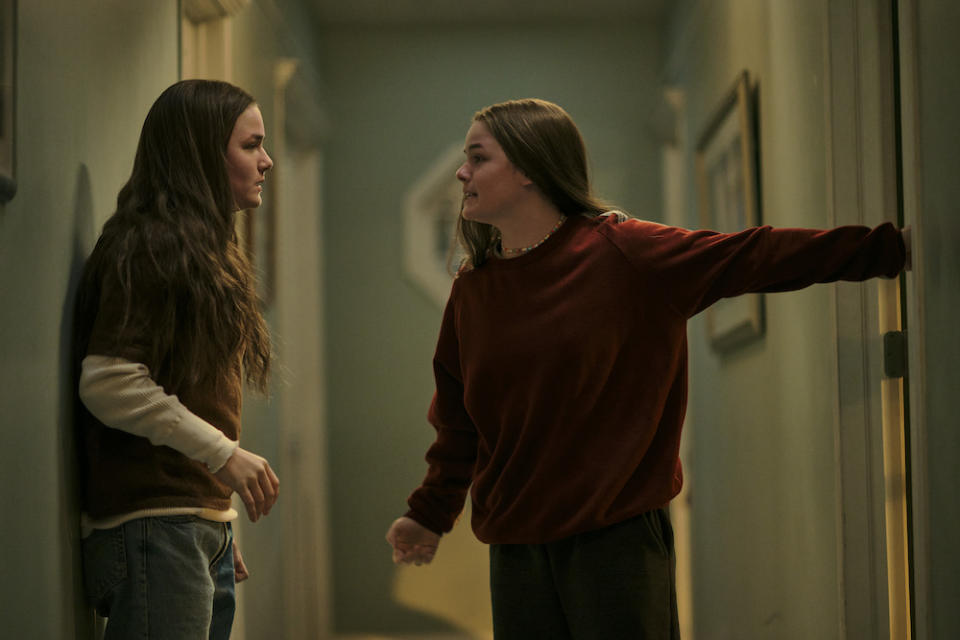
In the series premiere of “High School,” the twins — played by first-time actors Railey Gilliland (Tegan) and Seazynn Gilliland (Sara) — are fighting. They’ve grown apart over the summer, because Sara has secretly begun dating Phoebe (Olivia Rouyre), the best friend they once shared. It’s the first day of 10th grade, and they don’t know anyone else, but they’re so angry with one another that they end up having to go their own ways in school for once. They’ll come together at some point during the season, upon discovering that there’s a guitar in their house (belonging to Patrick) that they instinctively know how to play. The show, after all, is about them becoming Tegan and Sara: the people and the band.
DuVall spoke with Variety about creating the universe of “High School,” why it was “a real dream job” and her hopes for its future.
How did the Tegan and Sara of it all work with them as executive producers — were you sending them scripts? How were you getting their feedback?
We would send them outlines, and then they would let us know what they were OK with, or not OK with, in those. We would write the scripts, they would read the scripts, and again, sign off on those as well.
Given that it’s their lives, were there things where you were, like, “Oh, I really wanted that in there, but they don’t”?
A lot of their notes were about accuracy, details of like, “Oh, that would have never happened.” There were a couple of things that they really didn’t want us to do, and in those cases, if it was important to the story, we would have bigger conversations, and usually end up compromising.
We never wanted to do anything that they were like, “We hate that. We won’t feel good about that in the show.” But there were certain times that something needed to happen in order to move the story forward. So then it was just about having a conversation and finding a happy medium where they didn’t feel like it was so far from reality.
Although as the show evolved, it did sort of become its own thing, and there were more fictionalized parts of it. That also took a little bit of getting used to for them. They worked so hard on it, so then me coming in, being like, “What if this happened instead?” They were like, “Wait, what! But that’s not what happened.” That was an adjustment. I can’t imagine what it would be like to write a memoir and have todelve that deep into your life, and get everything in the right order, and then have someone come along and shake that all up. lt was really remarkable that they let me do this at all!
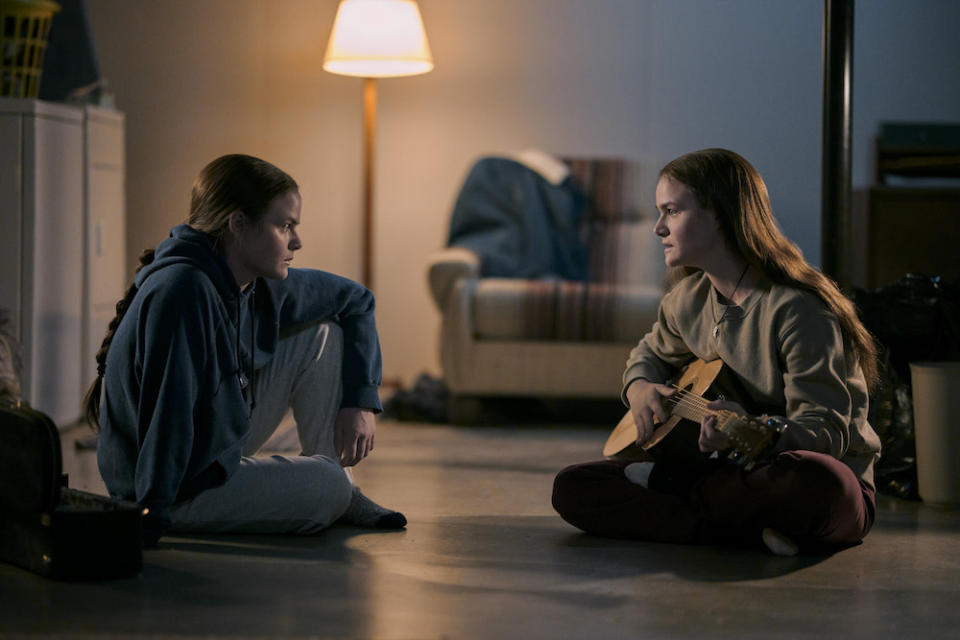
It’s about their lives and them growing up, but it’s also about how they discovered both separately and together that they’re very gifted musicians and forming the band Tegan and Sara. What was your approach to telling that part of the story?
It’s so well-laid out in the book: The backbone of the whole show is that journey. That really was our guiding light, keeping the integrity of that story intact. Because it is so unique, and it is something that you don’t get to see very often in television and film — women becoming artists, and teenage girls becoming artists. It was very important to us, and I know very important to Tegan and Sara, to maintain that being the core of the show.
What did you decide you wanted the aesthetic of the show to be as you were heading into production?
I didn’t want to define the period by all of the things from the ’90s. I never wanted to be winking at the audience like, “Remember this?” I wanted the show to feel timeless, and just have a classic feeling that didn’t lean too hard into a nostalgia-porn direction.
A city like Calgary — like, it is so beautiful, but it also can be kind of harsh, because the weather is so crazy. It’s also a city that never gets to play itself; it’s always something else. So being able to embrace it, and find the parts of the city that are still stuck in time, was really fun.
The show “High School” reminds me the most of tonally — and I’m sure you’ve seen these comparisons, too — is “My So-Called Life.” Was that in any of your minds?
Tegan and Sara talked about that show a lot —
Oh, right, they mention it in the book!
I’ve never seen it.
What? Clea.
I know! I’m a bad ’90s kid! I know I should watch it. But at a certain point, because we were making the show about young people in the ’90s, I didn’t want to watch it! I don’t want to be imitating or replicating I wanted to make something that was like completely its own thing. I just didn’t want to be influenced by something that I knew there would probably be inevitable comparisons. That felt like cheating.
Some of the music choices seem like they would be very expensive, like Smashing Pumpkins and Nirvana. Were you writing those things into the script, and just hoping that the money would appear?
Yes. Because Smashing Pumpkins was such a huge influence on Sara becoming a musician, and Nirvana was such a huge influence on Tegan, we did write those bands into the script. Because we had to have them; it had to be there. That was something that we were very transparent about with Freevee: “We’re gonna need these things. Because without these bands, who knows what kind of musicians Tegan and Sara would have turned into?”
Because Tegan and Sara are very beloved, popular musicians, they were able to also reach out and make their case for why we needed to have these in our show. They were very, very helpful with securing those songs.
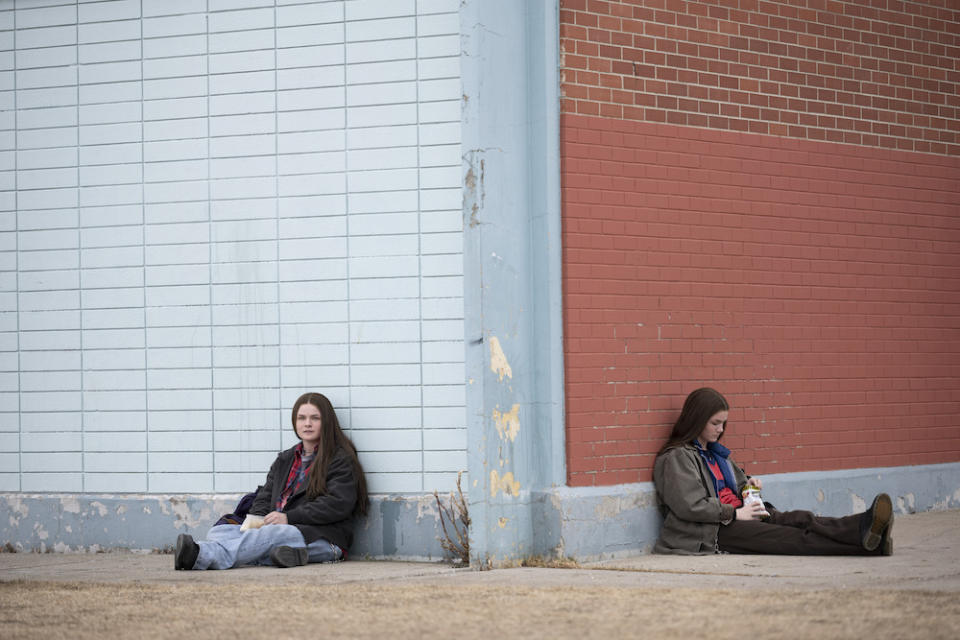
The book divides up Tegan and Sara’s narratives, which the show does too. But in a story about identical twins, it does feel daunting to me to try to distinguish their stories.
That’s part of why I wanted Sara to have the black eye. Having that immediate distinction in the first two episodes would be helpful as the audience was getting to know them as characters. But then I felt Tegan and Sara are so different from one another, and Railey and Seazynn are so different from one another — and the characters are so different — that I felt like after the first two people would get it.
How do you see the fictional characters of Tegan and Sara as distinct from one another?
I mean, Tegan has a lightness to her, and more of an innocence. She’s so quick to smile, and she has a laugh that is surprising and infectious. Whereas Sara is a little more removed, she’s a little bit more of an observer who is less likely to put herself forward. She’s just a little more introspective, and a little more haunted. A little more aware of what’s going on with herself, and haunted by it more. Even her relationship with Maya, her friendship with Maya, I don’t think she’s even aware that those feelings are what they are. She asks herself less questions about what she’s feeling, whereas Sara is in a position where she has to be asking these questions because of her circumstances.
And they do a lot of drugs. But it’s all OK — like, it’s not a cautionary tale, the show, which you don’t see so much of these days.
Because they weren’t drug addicts. Once they started playing music, their drug use and their drinking kind of became much, much less anyway, because they had something else they were focusing on. I think without music, it probably could have turned into something much different.
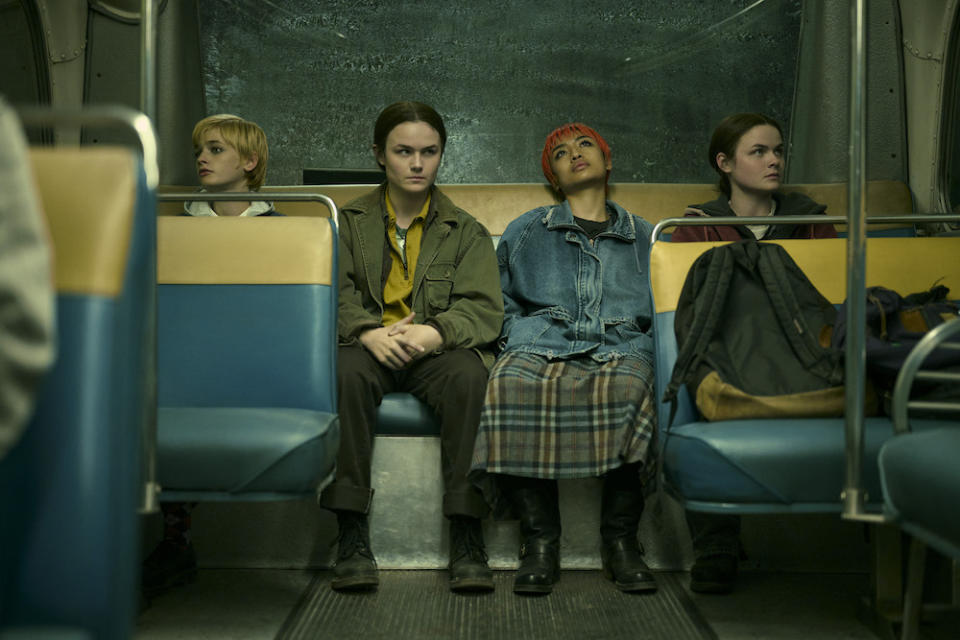
They seem to be totally surrounded by other queer girls in this Calgary suburb. Which I guess is the truth of what happened, but it made me laugh. Phoebe (Rouyre), Maya (Amanda Fix), Natalie (Esther McGregor), Ali (Brianne Tju) — there are so many of them. What were you wanting their world to be, friends-wise?
Characters like Natalie and Ali, it’s more that they are artists, and free spirits. They’re not gay characters. But they have a fluidity and an openness, and there is a queerness there, but not in the way that Sara is experiencing it. They are really representative of just a kind of friend that Sara has not had yet.
And then with Maya — we actually had very different plans for Maya, and then Amanda Fix is just so extraordinary that their relationship really evolved because of the dynamic, the onscreen dynamic, between Railey and Amanda. It really took on a different a different tone because of just what was happening on set — on screen. We’re still learning about that dynamic ourselves, Laura and I.
So you saw what they were like onscreen, and you started adjusting scripts to that?
Yeah, we did start adjusting scripts once we started filming. We kind of went back and retooled the last few scripts.
I’m worried about Maya! There’s not a ton of homophobia around them — was that true to their world?
Yeah, there was an openness and a fluidity to them and their group of friends. There was not a fear of it at all. It was interesting reading their book — which you wouldn’t think of Calgary in the ’90s. Because even in L.A., there was homophobia.
How much were you creating a show you wished had existed when you were a teenager? I mean, that’s how I felt watching it.
That was definitely part of it. I never thought I would make a coming-of-age story before I read their book. It just felt like something so special, it made the idea of doing something in that genre really, really appealing. Because of being able to bring so much to myself — and Laura is also queer, and she’s bringing stuff from her teenage years — it’s an opportunity to explore those feelings and do it within such a beautiful, interesting story.
Cobie Smulders: so good. She was in the first movie you wrote and directed, “The Intervention.” Can you tell the story of casting her in this?
We met on “The Intervention,” and we just stayed friends after that. She is the greatest, and the most delightful person to work with ever. The night before she was coming to shoot the movie, she broke her leg. And then she still showed up in Savannah and had a cast and had crutches and never complained even one time. I just loved what she did. And yes, she’s a brilliant actress, but she’s also just such a wonderful, wonderful person.
When I very first started this process, she was the only person that I wanted for that part. I think she was cast before Railey and Seazynn. So the fact that they looked that much alike felt like it was a this-is-meant-to-be type of thing.
Through the first four episodes, we’ve seen that they’re very into music, but no music from them yet. How did you decide to pace that out?
I wanted the audience to know them. I felt if they had just found a guitar in Episode 1, then it would be, “We don’t know these people, so we don’t know if this is a big deal or not.” I felt like we needed the time to let their story unfold, let their dynamic become more clear, so that the significance of them being able to come together through music would be felt.
Watching it, you want to shake them sometimes, like: “Sara, tell Tegan you’re dating Phoebe! It’ll explain everything!” And to Tegan, “Maya likes you, not that guy!” Those frustrations are so effective in terms of what they’re keeping from each other, or from themselves.
For all the characters in this show, they are not sharing with the people closest to them what’s really happening in their lives. Being that age, everything is so internal, and everything is not always clear.
Because of the format of the show, it creates this dynamic with the audience where they are the ones who know everything.
Without spoiling anything, the season does end on a cliffhanger. How confident are you about a second season?
There are ideas that we’re really excited about, and so we really hope that we have that opportunity. Freevee hasn’t said anything to us about when they’re deciding, or which way they’re leaning or anything like that. We don’t really know anything. The show will go on as long as there are stories within the book to tell. It will never go beyond the book.
It feels so hard to cut through these days — like, impossible. Does it feel that way from the creator end, too?
Yeah, it’s funny, I don’t think about that. I mean, I should probably think about that more! I feel like the people who need the show will find the show, and the people who this show is for will find it. For me, the shows that I always end up watching — or movies — are the ones that people have told me about. Because there is so much, and there’s just this constant influx of movies and television shows that you’re like, “Is this good? Is that good? Am I gonna like it, though?” There’s so much out there, that I am way more likely to take a recommendation from someone I know than I am to just like blindly start watching something.
What’s your perspective these days about your balance between acting, writing and directing? Is it what you want it to be?
Over the last couple of years, I’ve done a few acting jobs that were really fun, but I’m just doing things that come to me. I’m not auditioning, because I don’t really think about acting very much. Because writing is so time consuming, being in production is so time consuming, even when I was most recently on “Handmaid’s Tale,” I was in pre-production when they came to me, and I was like, “How am I gonna be able to do that?” It just seemed so crazy. And we were able to make it work. And I’m glad that we did, because it was a really good experience, and I love being a part of that show.
You had to explain Emily’s nonsensical return to Gilead! Who else was gonna do it?
Listen. That’s my job. And when I married her, I knew.
This interview has been edited and condensed.
Best of Variety
The Best Pop Culture Halloween Costumes for 2022: From 'House of the Dragon' to 'Euphoria'
Constance Wu Gets Candid in Revealing New Memoir 'Making a Scene'
Sign up for Variety’s Newsletter. For the latest news, follow us on Facebook, Twitter, and Instagram.

